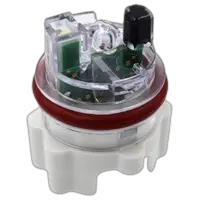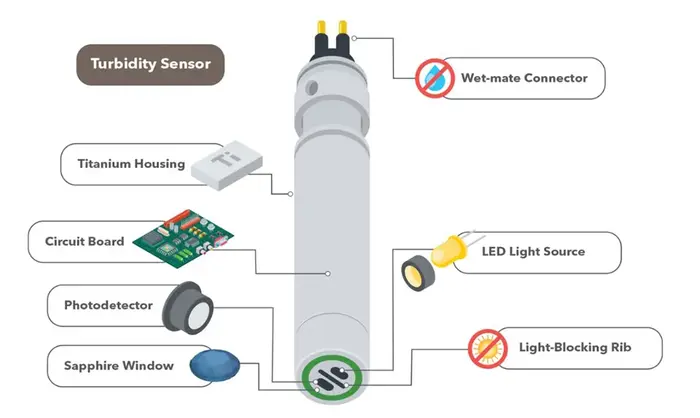If you ever notice a dishwasher is not draining water or taking forever to wash dishes, it could be due to a faulty Turbidity Sensor.
Yes, turbidity sensor plays a big role in the overall functioning of a dishwasher. That is why in this article, we will discuss What Turbidity Sensor In Dishwashers and how it work.
What Is Turbidity Sensor In Dishwasher
The Turbidity Sensor in a dishwasher is a sensor that is used to measure the cloudiness or haziness and the concentration of total dissolved/suspended solids in the water.
It is a sensor that measures the amount of light that is scattered by the suspended solids in water. As the amount of total suspended solids in water increases, the water’s turbidity level increases.
The data is then sent to the dishwasher controller which decides when to open the drain valve and stop the wash cycle based on the turbidity label of the water.

How Do Turbidity Sensors Work?
To understand how a turbidity sensor works, you need to understand what is Totally Dissolved Solids (TDS) and what is Totally Suspended Solids (TSS).
Totally dissolved solids are those impurities that are dissolved into the water. You may or may not see those impurities with the naked eye.
Totally suspended solids are impurities that are not dissolved into the water and often relate to the turbidity of the water.
When a dishwasher wash cycle is over, the water should have the minimum amount of TSS and TDS. Otherwise, the system thinks that the dishes are still dirty.
The turbidity sensors play a big role here. After every wash cycle when the water goes through the turbidity sensor, it sends a light ray through the water from a transmission beam. It then senses the intensity of the light at the other end of the sensor.

The difference in light intensity determines the amount of turbidity in the water as light can not pass through solids.
If the turbidity in the water is more than the desired value, it sends a signal to the dishwasher controller to run the wash cycle again until the turbidity sensor detects that the water is clean enough to drain.
Symptoms Of A Faulty Turbidity Sensor
Here are some of the symptoms that may indicate that you may have a faulty turbidity sensor in the dishwasher.
Dishwasher May Run For A Longer Wash Cycle: The reason for this is that the turbidity sensor thinks that the water is still dirty although the water is clean. This happens when you have a faulty turbidity sensor.
Dishwasher Does Not Drain Water: The drain valve will only open when it gets a signal from the turbidity sensor that the water is clean enough to drain. A faulty turbidity sensor will stop the drain water valve opening.
Dishes Are Not Clean: If the turbidity sensor gives a signal that the water is clean even though it is dirty, your wash cycle will be completed even before the dishes are clean. There are no other sensors that detect if the dishes are clean or not except the turbidity sensor which only detects the turbidity in the water.
FAQ | Turbidity Sensor In Dishwasher
What Does A Turbidity Sensor Do On A Dishwasher
The turbidity sensor in dishwashers detects if the water is clean or not based on the differences in light intensity that pass through the water. If the turbidity is high, the wash cycle continues. If not, it opens the drain valve.